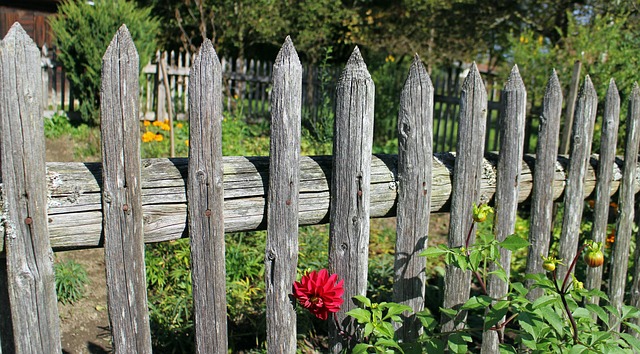For New Bedford, Massachusetts homeowners looking to install a DIY fence, understanding the process from start to finish is key to success. From navigating local regulations and choosing the right materials to measuring, digging, and maintaining your new fence, this guide provides essential tips for a sturdy and stylish barrier that enhances your property’s value and privacy. Let’s dive in and explore these crucial steps for a satisfying DIY fence installation.
- Understanding Local Regulations for Fence Installation
- Choosing the Right Fence Type and Material
- Measuring and Planning Your Fence Layout
- Digging and Marking Post Holes Efficiently
- Assembling and Attaching Fence Panels Securely
- Finishing Touches: Painting and Maintenance Tips
Understanding Local Regulations for Fence Installation
Before starting your DIY fence installation project in New Bedford, it’s crucial to familiarize yourself with the local regulations and permits required. The city of New Bedford has specific guidelines regarding property improvements, including fence installations. These regulations are designed to ensure safety, maintain neighborhood aesthetics, and protect historical sites. Check with the New Bedford Planning Department or Building Inspection Division to obtain any necessary permits and understand the rules about fence height, materials, and placement.
Different zones within the city might have varying restrictions, so it’s essential to verify these details based on your specific location. Understanding and adhering to local laws will help you avoid any legal issues and ensure a smooth DIY fence installation process.
Choosing the Right Fence Type and Material
When considering DIY fence installation, New Bedford homeowners should start by evaluating their needs and preferences to choose the right fence type and material. Factors like privacy, security, aesthetic appeal, climate resilience, and budget all play significant roles in this decision. For instance, a solid wood fence offers natural beauty but may require more maintenance than a vinyl fence, which is low-maintenance and durable against harsh weather conditions.
Additionally, the placement of the fence matters. Whether it’s to enclose a backyard, create a boundary with neighbors, or enhance curb appeal, understanding the purpose will guide your choice. Consider the local climate and environmental factors as well; materials like treated wood or vinyl are suitable for New Bedford’s humid summers and cold winters. Researching different options and understanding their benefits will ensure you select a fence that not only meets but exceeds your expectations for years to come.
Measuring and Planning Your Fence Layout
Before breaking ground on your DIY fence installation project, meticulous planning is essential. Start by evaluating your property’s topography and existing features like trees, garden beds, or utility lines. These elements will influence where your fence can be placed, its height, and material choices. Use measuring tapes to assess the perimeter you wish to enclose and decide on the desired length and style of your fence.
Create a detailed layout plan, marking out the fence’s position on the ground. This step ensures that your fence aligns with local regulations and property lines, avoiding potential legal issues or conflicts with neighbors. Accurate measurements will also help you accurately cut posts and rails, making for a sturdy and aesthetically pleasing final product.
Digging and Marking Post Holes Efficiently
When installing a fence, digging post holes is an essential step. New Bedford homeowners should aim for a depth of about 3 to 4 feet, as this provides stability and prevents the posts from tilting over time. Before breaking ground, use stakes and string to mark out the desired line of your fence, ensuring it’s straight. Then, using a post-hole digger or shovel, carefully excavate the holes along this line. It’s crucial to make each hole large enough for the bottom of the post to fit comfortably, allowing for some space to backfill with concrete.
To save time and effort, consider marking out several holes at once, ensuring they are evenly spaced according to your fence design. This efficient approach can help streamline the entire installation process. Remember, accurate measurements and a solid foundation are key to a long-lasting fence.
Assembling and Attaching Fence Panels Securely
When assembling fence panels, ensure each panel is securely fastened to its neighbors. Start by aligning the panels perfectly along your desired fence line, then use appropriate hardware like nails or screws to join them together. Make sure the joints are tight and even to maintain a sturdy structure. For added security, consider using brackets at the top and bottom of each section to reinforce the overall stability.
Before attaching the panels to posts, double-check that all pieces are level and aligned correctly. Use a level to ensure vertical and horizontal accuracy. Once satisfied with the positioning, secure the panels to the posts with the appropriate fasteners. This step is crucial for preventing future misalignments and ensuring your fence stands strong against external forces.
Finishing Touches: Painting and Maintenance Tips
After successfully installing your new fence, it’s time to add those finishing touches that will ensure its longevity and enhance its aesthetic appeal. Painting is a great way to protect your fence from the elements and give it a fresh look. Choose a high-quality outdoor paint suitable for the material of your fence. New Bedford’s climate demands durability, so opt for a paint designed for all seasons. Start by preparing the surface—clean it thoroughly and repair any damages or rough spots before applying the first coat. A well-prepared fence will ensure even coverage and a more professional finish.
Regular maintenance is key to keeping your fence in top condition. This includes periodic cleaning, repainting as needed, and checking for loose or damaged boards. Inspecting your fence regularly will help you catch small issues early on, preventing them from turning into major problems. Maintaining your fence not only keeps it looking its best but also ensures it serves its purpose—providing privacy, security, and beauty to your New Bedford home.
